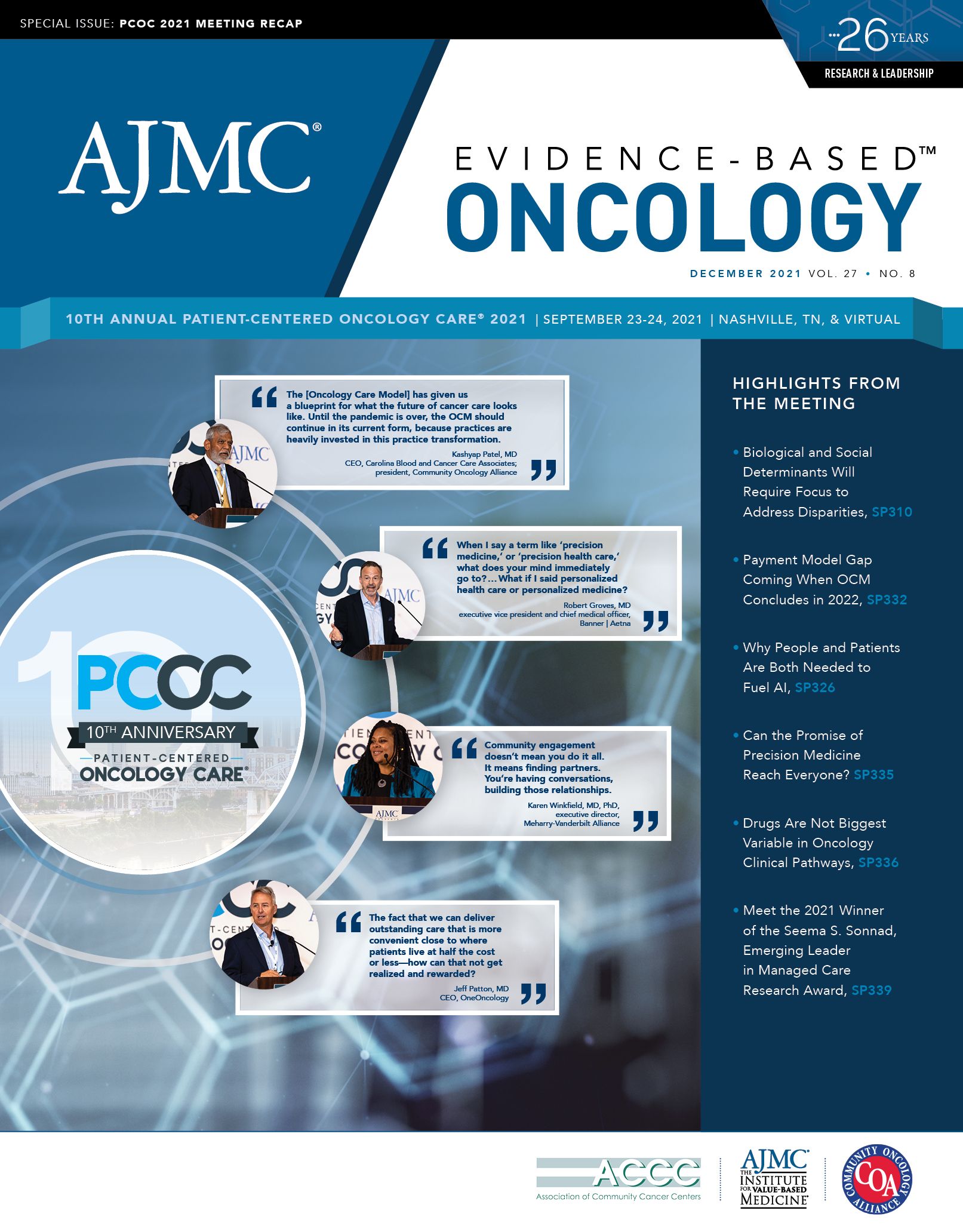- Center on Health Equity & Access
- Clinical
- Health Care Cost
- Health Care Delivery
- Insurance
- Policy
- Technology
- Value-Based Care
Understanding Psychographics and How All Health Care Behavior Is Local
On the opening day of Patient-Centered Oncology Care, Robert Groves, MD, of Banner | Aetna, discussed the use of psychographics to predict health behavior in local populations.
Why do some people always get their annual physical and faithfully take their medications, while others avoid the doctor until they end up in the emergency department (ED)? How do we predict which person—or at least, which groups of people—are likely to be the costly ED patients?
Data sets can provide us with this information, according to Robert Groves, MD, executive vice president and chief medical officer at Banner | Aetna, based in Phoenix, Arizona. And while it might seem a little scary—these data can be used in harmful ways, to be sure, Groves said—health systems can leverage artificial intelligence (AI) to use such data—from the brands consumers select to their achievements and preferences—to predict their
health behavior.
Groves spoke about using the power of AI to leverage these data, called psychographics, in a talk during the first day of Patient-Centered Oncology Care® (PCOC), held in a hybrid format from the Omni Nashville Hotel. Groves appeared in person.
“When I say a term like ‘precision medicine,’ or ‘precision health care,’ what does your mind immediately go to? For most of us in this room, it probably goes to genetics and Cas9, CRISPR-based editing, genetic predictions, and that’s fair,” Groves said. “But what if I said personalized health care or personalized medicine?”
The data that are collected on individuals, or psychographics, “is a way of describing why people make the decisions they make,” Groves said.
Unlike demographics—which collect facts like age, gender, or income level, measuring data about a person in the moment—Groves said that psychographics tend to measure characteristics that hold up over time. When psychographics are laid over geography, the resulting “microcultures” are very local. But these are important to health systems, because that’s how health care markets operate.
Groves also discussed the collaborators Daniel Kahneman, PhD, and Amos Tversky, PhD, who created the field of behavioral economics by upending the idea that human beings always acted rationally. In fact, Kahneman and Tversky posited, humans make plenty of illogical choices and take shortcuts in their decision making.1
Kahneman and a former student, Richard Thaler, PhD, won separate Nobel Prizes for what is now called nudge theory: the idea that behavior can be changed slowly over time by a series of small changes, or nudges. Health systems are paying attention to how they can harness psychographics and deploy the data into nudges, giving them a chance to direct populations toward healthier choices, Groves said.
“Now, I’m not suggesting that you can take psychographic profiling down to the individual level and influence the behavior because, by definition, it is defining microcultures, not individuals,” he said. “But it can be extremely useful if you are a health system, and you’re trying to plan strategically for the future.”
Several examples of nudge theory are already in practice. Groves is an unpaid advisory board member with the AI company CareCentra, which is developing strategies for health systems. In academia, Penn Medicine’s Nudge Unit has published work on using wearables to improve sleep and using text messages to boost flu shot rates.2 In the commercial sector, there’s the weight loss company Noom, cofounded by Artem Petakov, who
studied under Kahneman at Princeton University.3
An important feature of AI in these circumstances is that it is not judgmental, Groves said. He pointed to an example of a woman who was not taking her medication, but the AI tracking her decisions noted that she was having a Coke every day; the algorithm recommended that she put her medications with the Coke so she would not forget to take them. “As a physician, I might say, ‘Well, the first thing we have to do is get rid of that Coke,’ but that’s not really ideal, is it?” noted Groves. Putting the medications near the Coke did, in fact, help the woman become compliant
with taking them.
The research data Groves presented showed that people fall into 5 broad categories of health care decision-making, with 26.7% labeled “willful endurers,” meaning they mostly go about life unfocused on their health, and not much will change their attitude. Groves said a key discovery of this work is that for most people, their predisposition for health care decision-making is hard wired by age 18 years, “and it takes a lot to move people—and
the one thing that does move them is a diagnosis of cancer.”
These data have great power, Groves said. Historically, pharmaceutical companies primarily used psychographics for marketing; understanding that the data could also be used to help people stay on medication or eat healthier food could allow health systems “to actually manage this beast and turn it toward good.”¨
References
1. Heukelom F. Kahneman and Tversky and the origin of behavioral economics. Tinbergen Institute Discussion Paper No. 07-003/1. Tinbergen Institute; 2007. http://hdl.handle.
net/10419/86560
2. Caffrey M. Using behavioral design to make digital health personal. Chief Healthcare Executive. March 10, 2021. Accessed October 17, 2021. https://www.chiefhealthcareexecutive.com/
view/using-behavioral-design-to-make-digital-health-personal
3. Caffrey M. With outcomes-based pricing, Noom ties its fortunes to participants’ success. The American Journal of Managed Care®. December 30, 2016. Accessed October 17, 2021.
https://www.ajmc.com/view/with-outcomes-based-pricing-noom-ties-its-fortunes-toparticipants-success

Assessing New York’s Health Care Disparities Using Health Plan Quality Data
November 11th 2025Utilizing the Health Insurance Disparities Index for assessment, the authors found that New York’s Medicaid health maintenance organizations (HMOs) outperformed Medicaid HMOs nationally in addressing health care disparities from 2019 to 2023.
Read More
